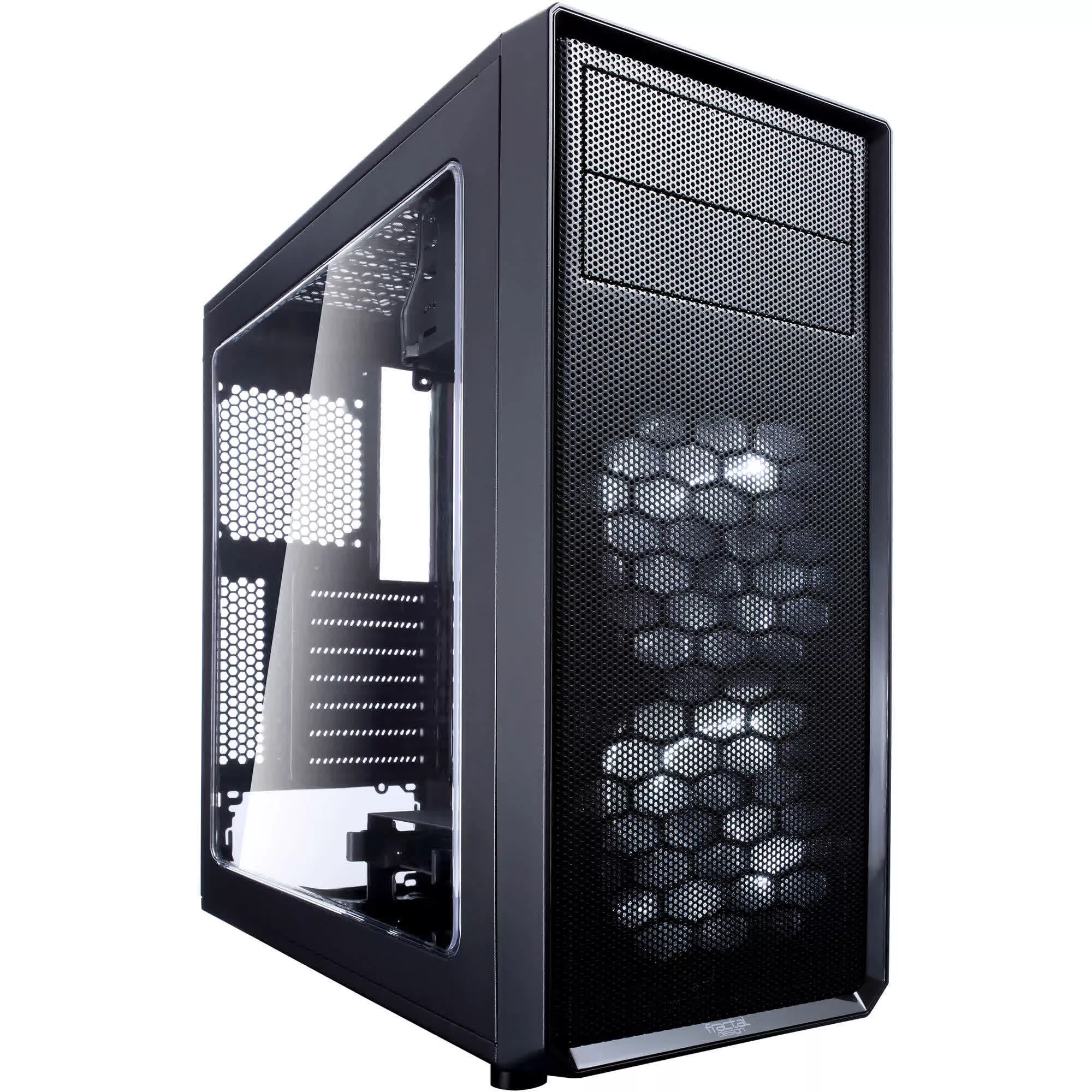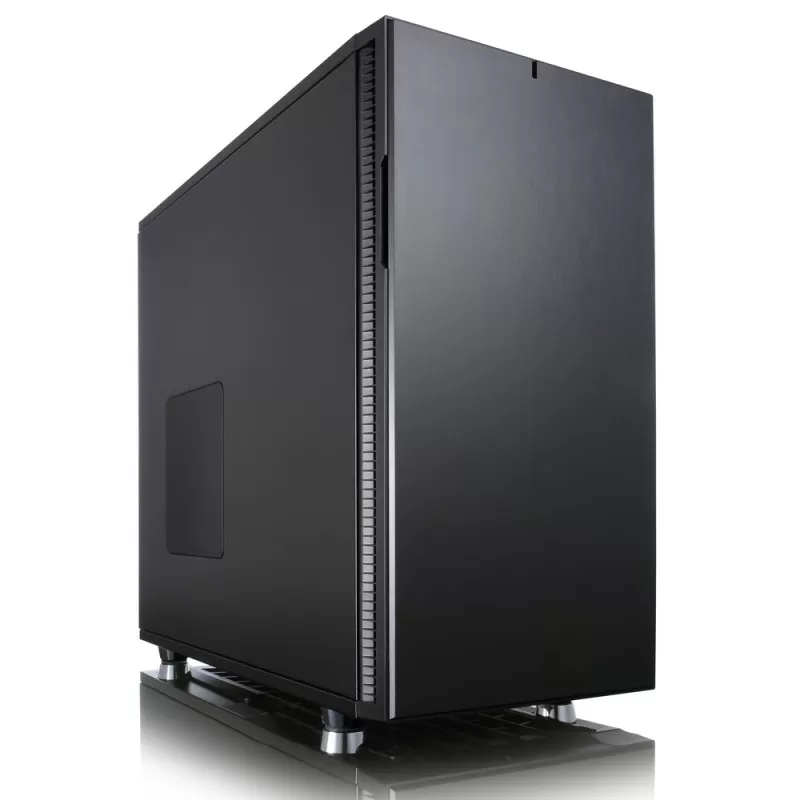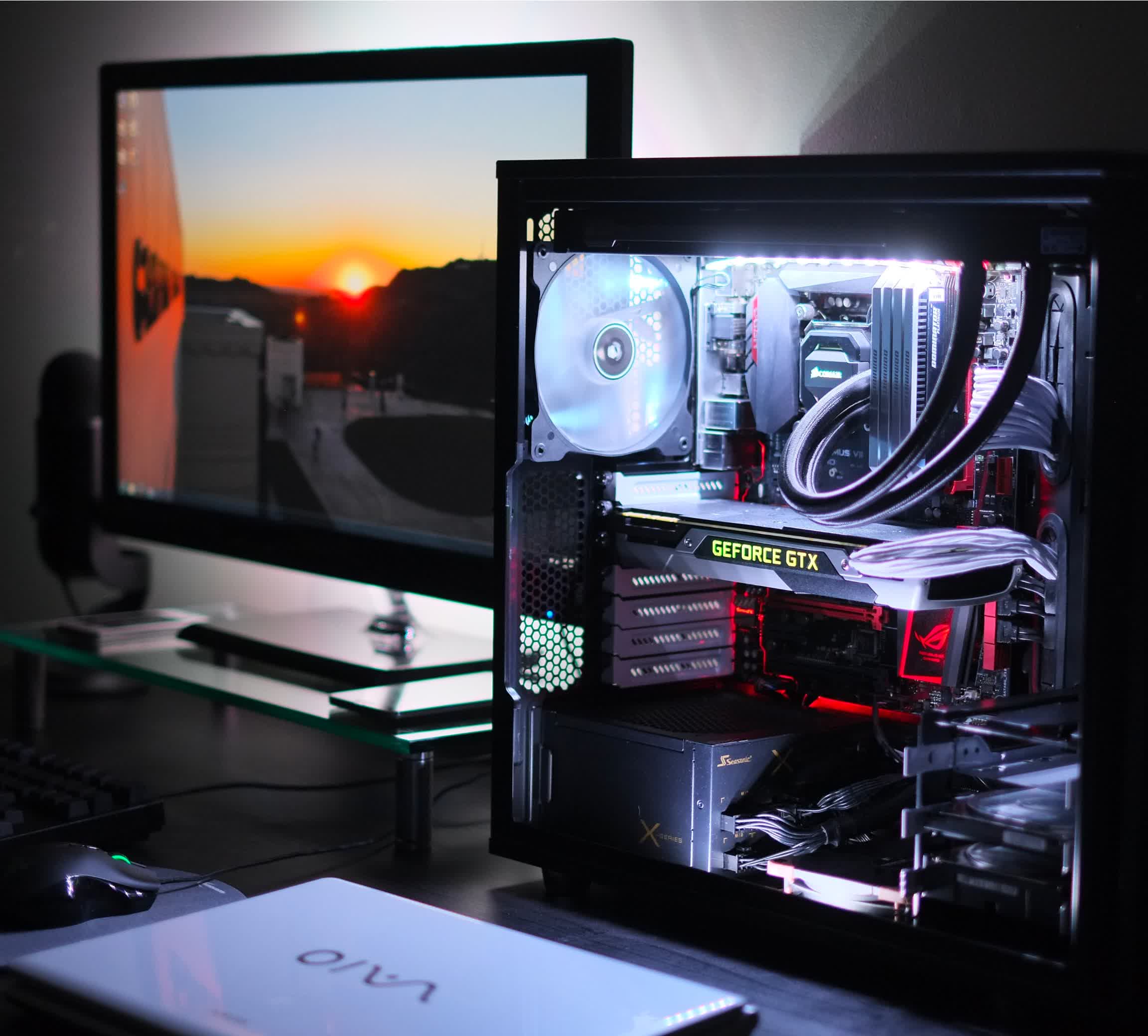If you are a power user looking to build a new PC, you may be dissatisfied with the current selection of cases on the market. I mean, there are some great ones that we recommend, but it does seem like there's a shortage of nice cases with external drive bays for an optical disk drive, a hot-swap SATA bay, or a drawer for USB devices. Maybe you don't want to replace your case as often as you replace your motherboard, and want to be able to add front connectors that your next motherboard may support, such as USB 4.0.
It also looks like every case of decent quality has a side panel of tempered glass, which means no side vents for your M.2 drives to get direct airflow, or even a physical hazard if you often carry your PC with you. Even finding a case with more than two internal 3.5" bays for a decent price is more difficult than it sounds. A RAID setup never seemed less affordable.
As we've shown, you can improve an old PC case by adding drive cages, fan controllers and more, but those methods aren't suitable for everyone. Maybe your case is more than a few years old, and lacks features that are considered basic today or doesn't have good options to improve airflow. Maybe it can't physically fit components that you'd like to add, or you want to switch to a smaller case. And maybe you'd rather keep your old system functional than reuse the case with new internals.
Old-school PC cases are not dead: no matter what's your budget or size preference, you can still get a new case with an external drive bay, no tempered glass, and all of the drive bays you need. Here are some of the best examples of that, representing different budgets and sizes.
Best for Gaming
Phanteks Enthoo Pro

Released in 2014, the Phanteks Enthoo Pro is the best "standard" old-school PC case on the market. It appears to have 4 external 5.25" bays, but the top cover actually hides the case's front connectors (including two USB 3.0 and two USB 2.0) and reset button, so that they don't gather dust or get pressed by accident.
The Enthoo Pro has one SSD mount behind the motherboard, and 2 detachable cages for 3 SATA drives each in the front. Those drives will be kept cool by the included 200mm front fan. You can replace that fan with two 140mm or 120mm fans. If you are worried that the cages will direct the cool air away from your graphics card, as the case has no side vents, you can install a 120mm fan on the opposite side of each cage.

In the rear, a 140mm fan will make sure that most of the air doesn't escape the case without reaching the CPU area. The top of the case supports liquid coolers up to 420mm, so if you have a CPU liquid cooler you may want to remove the rear fan, as it would compete with it for air. The bottom supports either one 140mm fan or two 120mm fans, but the PSU shroud and drive cages can make them ineffective.
With all of that potential airflow, it's good that the case has dust filters inside the front and top panels, and two at the bottom: one that's easily removable from the front, and one for the PSU removable from the back.
The Enthoo Pro has several rubberized cable routing holes, and a 6-channel fan connector hub to help with cable management, but it doesn't have a physical fan controller. Thanks to the case's external bays, you can add an aftermarket controller.
The case is also suitable for high-end builds: it supports motherboards with 8 expansion slots, CPU coolers up to 193mm tall, and graphics cards up to 347mm long even with both drive cages installed.
The Phanteks Enthoo Pro costs $110 for the non-windowed and acrylic window versions, and $120 for the tempered glass version (with a 140mm fan in the front instead of 200mm). The non-windowed version comes without a PSU shroud.
Best Budget
Fractal Design Focus G

If you want to put together a budget system and don't need many drives, Fractal Design's Focus G or Focus G Mini are as cheap as we recommend going at $50. The two are almost identical, with the only functional difference being that the Focus G is a couple of inches taller and supports full ATX motherboards in addition to mATX.
Both Focus G cases have 2 external drive bays with vented covers, one SSD mount, and a cage for 2 SATA drives. They also support up to 6 fans: 120mm in the rear and at the bottom, and two 140mm or 120mm in the front and at the top. The top panel only supports 240mm radiators, though.
What makes the Focus G unique is that the case is available in 5 colors: blue, red, grey, white and black. The huge acrylic side window and white LED on both fans also helps the series look more modern than most old-school cases.
Released in 2017 and despite their price tag, the two Focus G models offer most of the features that you'd expect from a modern case: tool-less installation mechanisms for opening the case and installing drives, holes for cable routing, a bottom power supply mount, a large hole in the motherboard tray for replacing a CPU cooler with a backplate, and even reusable covers for the expansion slots.

The cases come with two 120mm fans installed in the front, so that most of the air will enter the case through the filtered front panel. The top two vents have individual filters, which you should remove if you install exhaust fans there.
The bottom vents also have a filter, but it's just a perforated piece of paper-thin metal that blocks most of the little air that can get between the case's short feet. With no plastic frame, the filter is bound to get bent and become even more useless very quickly. In this case, we recommend installing the PSU with the fan facing up to draw filtered air from inside the case. Another annoyance with these cases is that their front I/O features one USB 3.0 and one USB 2.0, each connecting with a different cable to a motherboard connector that could support two of them.
If you need support for more SATA drives out of the box, you may want to check out Thermaltake's Versa H22 ($50), but if you can afford several drives you can probably afford a better case as well. Antec's Three Hundred Two and Corsair's Carbide 200R are sometimes available for a bit more money and also have side vents.
Best Full Tower
Rosewill Thor V2

The Rosewill Thor V2 is the ultimate old-school case: with 10 expansion slot covers, it can fit even the most extreme consumer motherboards. It has 6 external 5.25" bays, one of which is easily convertible to 3.5". If you want to be able to make several copies of a CD simultaneously or back up entire RAID arrays, this is the case for you.
The Thor V2 comes with 4 fans: one 140mm at the rear, and three 230mm in the front, on the side and at the top. No matter what you put inside of it, the case will keep it cool. You can also replace the top fan with up to two 140mm fans, and the side fan with up to four (!) 120mm fans.
The top panel has dragon-like fins that you can close with a slider when the PC isn't in use to prevent dust accumulation. The side fan doesn't come with a filter, but Demcifilter sells a magnetic filter made specifically for it for $23, and you can also use the fan as an exhaust. The bottom vent, where you can install a fan up to 140mm, does have a filter, and so do the PSU and the front panel.

The case's front I/O includes two USB 3.0 and two USB 2.0 connectors, a dual-channel fan controller for up to 6 fans, and even an eSATA port for old external drives.
As a revised case from 2011, it can make you use a screwdriver more often than newer cases. It doesn't officially support radiators inside the case, but with 180mm air-cooler support and 4 tube holes it has enough CPU cooling options. Officially, it only supports graphics cards up to 330mm long, but even if you find a longer card it may end up fitting. The case has "only" 6 SATA drive bays, but with the ease of turning 5.25" bays into drive cages, it's not a real drawback either.
At $140 (black or white), this case is in a league of its own. For $200, the Thermaltake's Core V71 has comparable cooling capabilities and official radiator support, but it's less old-school with tempered glass and only 2 external bays. The same can be said about Fractal's $210 Define 7 XL and the $270 Be Quiet! Dark Base Pro 900. The Phanteks $250 Enthoo Primo has five 5.25" bays, but probably doesn't cool as well as the Thor out of the box.
Best Low Noise
Fractal Design Define R5

As a "silenced" case, the Fractal Design Define R5 uses dampening foam and a side-vented front panel to lower the pitch of the noise coming out of it and direct it toward the rear of the case. It even has covers on its side vent and top panel that you should remove if you install fans there. Released in 2014, the Define R5 is the last of Fractal's flagship series to offer a side vent, and one of the last to offer two external 5.25" drive bays.
The R5 comes with a door that can be mounted on either side of the front panel, and hides the 5.25" bays, a 3-speed controller for up to 3 fans, and a removable filter. Up to two 140mm fans can be placed behind that filter (one is there out of the box), so you can keep the door open while gaming to improve airflow inside the system. The front I/O, including two USB 3.0 and two USB 2.0, sits on the top of the panel and doesn't require opening the door to access.
The case has 2 SSD mounts behind the motherboard, and 2 detachable cages for SATA drives: one for 3, and one for 5. If you remove the 5-drive cage, you'll be able to install graphics cards even longer than 310mm. If you remove both cages, you'll be able to install two 140mm or 120mm fans at the bottom of the case instead of just one. Both of those fans and the PSU share a huge filter which is thankfully removable from the front.

With only 7 covers for expansion slots, the case may not fit some high-end motherboards, but it's suitable for cooling the most power-hungry desktop CPUs: besides its 140mm rear fan, it supports CPU coolers up to 180mm tall, and up to 420mm radiators on top (you'll need to remove the 5.25" drive cage to fit a triple-fan cooler).
In addition, you can install a 140mm or 120mm exhaust fan on the side vent to prevent hot air from the graphics card's area from reaching the CPU cooler. Sadly, that vent doesn't have a filter, so you should probably buy one if you want to install an intake fan there.
At $110, price seems fair for such a case. If you need an 8th slot cover, you can get Antec's P101 for the same price, but it has only one 5.25" bay and less cooling options. If you are trying to save some money, for $80 you can grab the Be Quiet! Pure Base 600, just don't expect the same kind of features and cooling performance.
Best Small Form Factor
Fractal Design Core 500

Even with a Mini-ITX case, you don't have to give up a full-sized 5.25" external bay. In fact, Fractal's Core 500 also supports 3 hard disks, 3 SSDs, radiators up to 280mm -- although you'd need to choose between a dual-fan radiator and a long 5.25" drive -- CPU coolers up to 170mm tall, graphics cards up to 310mm long and full-sized ATX power supplies.
How is all of that possible? With clever use of space: instead of wasting space on an airflow path near the graphics card, the card is installed vertically next to the filtered side vent, with its fans pulling air directly from outside the case. On the other side of the case, the PSU pulls air through the bottom filter and blows it out of the other side vent.

By default, the rest of the system gets cool air through the filtered top vent (the two smaller vents on the sides of the front panel basically lead nowhere), with a 140mm fan exhausting the hot air in the rear. If you have a top-down CPU cooler and an M.2 drive, you may want to use that fan as a top intake. You may also want to use the fan as an intake if you use an exhaust radiator.
The main compromise in terms of size is the lack of dedicated space for cable management. In this case, it's actually good that the front panel only has two USB connectors -- both 3.0 with a single cable. Also, as the case only has 2 motherboard expansion slots, it doesn't support triple-slot graphics cards.
The Fractal Design Core 500 was released in 2015 with a $60 price tag, which it retains to this day. As an alternative, Cooler Master's Elite 130 costs about the same and looks similar at first sight, but doesn't use its space as efficiently (it can only fit CPU coolers up to 65mm tall and a 120mm radiator), has a less consistent design (especially with the 5.25" bay in use), and doesn't do an equally good job at directing noise away from your ears.
Honorable Mentions
The following cases are also a good value for your money and include some old-school features, but are not old-school enough for this article...

